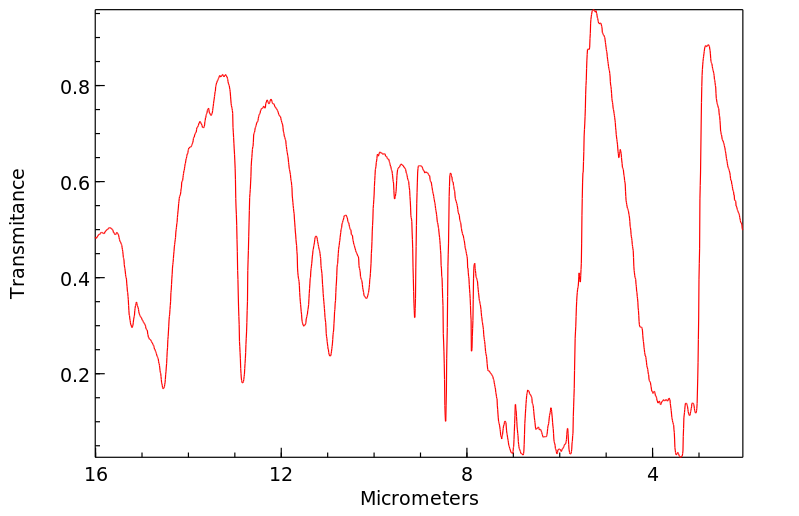三聚氰胺一酰胺 | 645-93-2
-
物化性质
-
计算性质
-
ADMET
-
安全信息
-
SDS
-
制备方法与用途
-
上下游信息
-
文献信息
-
表征谱图
-
同类化合物
-
相关功能分类
-
相关结构分类
物化性质
-
熔点:>300 °C(lit.)
-
沸点:237.47°C (rough estimate)
-
密度:1.573
-
溶解度:可溶于水基(非常轻微)、DMSO(非常轻微、加热、超声处理)
-
稳定性/保质期:
远离氧化物和强酸。
计算性质
-
辛醇/水分配系数(LogP):-1.5
-
重原子数:9
-
可旋转键数:0
-
环数:1.0
-
sp3杂化的碳原子比例:0.0
-
拓扑面积:96.6
-
氢给体数:3
-
氢受体数:2
安全信息
-
危险品标志:Xi
-
安全说明:S36/37
-
危险类别码:R43
-
WGK Germany:1
-
RTECS号:OS0700000
-
海关编码:2933699090
-
危险性防范说明:P264,P280,P302+P352,P337+P313,P305+P351+P338,P362+P364,P332+P313
-
危险性描述:H315,H319
-
储存条件:存放在密封容器中,并置于阴凉、干燥处。请务必远离氧化剂。
SDS
模块 1. 化学品
产品名称: Ammelide
模块 2. 危险性概述
GHS分类
物理性危害 未分类
健康危害
皮肤腐蚀/刺激 第2级
严重损伤/刺激眼睛 2A类
环境危害 未分类
GHS标签元素
图标或危害标志
信号词 警告
危险描述 造成皮肤刺激
造成严重眼刺激
防范说明
[预防] 处理后要彻底清洗双手。
穿戴防护手套/护目镜/防护面具。
[急救措施] 眼睛接触:用水小心清洗几分钟。如果方便,易操作,摘除隐形眼镜。继续冲洗。
眼睛接触:求医/就诊
皮肤接触:用大量肥皂和水轻轻洗。
若皮肤刺激:求医/就诊。
脱掉被污染的衣物,清洗后方可重新使用。
模块 3. 成分/组成信息
单一物质/混和物 单一物质
化学名(中文名): 三聚氰胺一酰胺
百分比: >98.0%(T)
CAS编码: 645-93-2
俗名: 6-Amino-1,3,5-triazine-2,4-diol , Cyanuramide , Cyanuric Acid Monoamide ,
Dihydro-6-imino-1,3,5-triazine-2,4(1H,3H)-dione , Melanuric Acid
三聚氰胺一酰胺
模块 3. 成分/组成信息
分子式: C3H4N4O2
模块 4. 急救措施
吸入: 将受害者移到新鲜空气处,保持呼吸通畅,休息。若感不适请求医/就诊。
皮肤接触: 立即去除/脱掉所有被污染的衣物。用大量肥皂和水轻轻洗。
若皮肤刺激或发生皮疹:求医/就诊。
眼睛接触: 用水小心清洗几分钟。如果方便,易操作,摘除隐形眼镜。继续清洗。
如果眼睛刺激:求医/就诊。
食入: 若感不适,求医/就诊。漱口。
紧急救助者的防护: 救援者需要穿戴个人防护用品,比如橡胶手套和气密性护目镜。
模块 5. 消防措施
合适的灭火剂: 干粉,泡沫,雾状水,二氧化碳
特殊危险性: 小心,燃烧或高温下可能分解产生毒烟。
特定方法: 从上风处灭火,根据周围环境选择合适的灭火方法。
非相关人员应该撤离至安全地方。
周围一旦着火:如果安全,移去可移动容器。
消防员的特殊防护用具: 灭火时,一定要穿戴个人防护用品。
模块 6. 泄漏应急处理
个人防护措施,防护用具, 使用个人防护用品。远离溢出物/泄露处并处在上风处。
紧急措施: 泄露区应该用安全带等圈起来,控制非相关人员进入。
环保措施: 防止进入下水道。
控制和清洗的方法和材料: 清扫收集粉尘,封入密闭容器。注意切勿分散。附着物或收集物应该立即根据合适的
法律法规处置。
模块 7. 操作处置与储存
处理
技术措施: 在通风良好处进行处理。穿戴合适的防护用具。防止粉尘扩散。处理后彻底清洗双手
和脸。
注意事项: 如果粉尘或浮质产生,使用局部排气。
操作处置注意事项: 避免接触皮肤、眼睛和衣物。
贮存
储存条件: 保持容器密闭。存放于凉爽、阴暗处。
远离不相容的材料比如氧化剂存放。
包装材料: 依据法律。
模块 8. 接触控制和个体防护
工程控制: 尽可能安装封闭体系或局部排风系统,操作人员切勿直接接触。同时安装淋浴器和洗
眼器。
个人防护用品
呼吸系统防护: 防尘面具。依据当地和政府法规。
手部防护: 防护手套。
眼睛防护: 安全防护镜。如果情况需要,佩戴面具。
皮肤和身体防护: 防护服。如果情况需要,穿戴防护靴。
模块 9. 理化特性
外形(20°C): 固体
外观: 晶体-粉末
三聚氰胺一酰胺
模块 9. 理化特性
颜色: 白色类白色
气味: 无资料
pH: 无数据资料
熔点: 无资料
沸点/沸程 无资料
闪点: 无资料
爆炸特性
爆炸下限: 无资料
爆炸上限: 无资料
密度: 无资料
溶解度:
[水] 无资料
[其他溶剂] 无资料
模块 10. 稳定性和反应性
化学稳定性: 一般情况下稳定。
危险反应的可能性: 未报道特殊反应性。
须避免接触的物质 氧化剂, 强酸
危险的分解产物: 一氧化碳, 二氧化碳, 氮氧化物 (NOx)
模块 11. 毒理学信息
急性毒性: 无资料
对皮肤腐蚀或刺激: 无资料
对眼睛严重损害或刺激: 无资料
生殖细胞变异原性: 无资料
致癌性:
IARC = 无资料
NTP = 无资料
生殖毒性: 无资料
模块 12. 生态学信息
生态毒性:
鱼类: 无资料
甲壳类: 无资料
藻类: 无资料
残留性 / 降解性: 无资料
潜在生物累积 (BCF): 无资料
土壤中移动性
log水分配系数: 无资料
土壤吸收系数 (Koc): 无资料
亨利定律 无资料
constaNT(PaM3/mol):
模块 13. 废弃处置
如果可能,回收处理。请咨询当地管理部门。建议在可燃溶剂中溶解混合,在装有后燃和洗涤装置的化学焚烧炉中
焚烧。废弃处置时请遵守国家、地区和当地的所有法规。
模块 14. 运输信息
联合国分类: 与联合国分类标准不一致
三聚氰胺一酰胺
模块 14. 运输信息
UN编号: 未列明
模块 15. 法规信息
《危险化学品安全管理条例》(2002年1月26日国务院发布,2011年2月16日修订): 针对危险化学品的安全使用、
生产、储存、运输、装卸等方面均作了相应的规定。
模块16 - 其他信息
N/A
上下游信息
-
上游原料
中文名称 英文名称 CAS号 化学式 分子量 4,6-二氨基-2-羟基-1,3,5-三嗪 ammeline 645-92-1 C3H5N5O 127.106 氰尿酸 Cyanuric acid 108-80-5 C3H3N3O3 129.075 -
下游产品
中文名称 英文名称 CAS号 化学式 分子量 氰尿酸 Cyanuric acid 108-80-5 C3H3N3O3 129.075
反应信息
-
作为反应物:参考文献:名称:PERRY, ROBERT A.摘要:DOI:
-
作为产物:参考文献:名称:Knapp, Justus Liebigs Annalen der Chemie, 1837, vol. 21, p. 245,246,250摘要:DOI:
文献信息
-
Model of the Tensile Stress-Strain Behavior of Fabrics作者:E. H. Taibi、A. Hammouche、A. KifaniDOI:10.1177/004051750107100703日期:2001.7
Currently, objective measurements of textile fabrics refer to mechanical and physical properties measured by testing devices such as KES (Kawabata's evaluation system) and FAST (fabric assurance by simple testing). Textile scientists and engineers can easily obtain the values of these properties, but their use for developing models of fabric behavior is rare, although this is the simplest and most correct way to do it. Here, we develop an analytical model of the tensile force dependent on strain for a fabric sample, integrating the Kawabata parameters obtained by means of this test. The empirical stress-strain curves of some fabrics are presented and compared with curves obtained analytically.
目前,对纺织面料的客观测量是指通过测试设备(如KES(川端评价系统)和FAST(简单测试的面料保证))测量的机械和物理性能。纺织科学家和工程师可以轻松获得这些性能的数值,但它们用于开发面料行为模型的情况很少,尽管这是最简单和最正确的方法。在这里,我们开发了一个依赖于应变的拉伸力的分析模型,集成了通过这种测试获得的川端参数的面料样本。一些面料的经验应力-应变曲线被呈现并与通过分析获得的曲线进行比较。 -
Studies of Cyanamide Derivatives. Part 110. A Facile Synthesis of 2,4,6-Triureido-1,3,5-triazine and 2-Amino-4,6-diureido-1,3,5-triazine作者:Kokoro Iio、Eiichi IchikawaiDOI:10.1246/bcsj.57.2009日期:1984.72,4,6-Triureido-1,3,5-triazine and 2-amino-4,6-diureido-1,3,5-triazine were readily synthesized in high yields, 94 and 85% respectively, by the alcoholysis of 2,4,6-tris(cyanoamino)-1,3,5-triazine and 2-amino-4,6-bis(cyanoamino)-1,3,5-triazine in the presence of hydrogen chloride.
-
含磷三嗪环盐化合物及其制备方法和应用
-
Molecular Weight Dependence of Tensile Properties of Ramie and Linen Fibers作者:Hajime Miyake、Masanobu NaguraDOI:10.1177/004051750107100714日期:2001.7
This study examines the dependence of ramie and linen tensile properties on the molecular weight of cellulose as a function of moisture absorption. The influence of the crystalline region and molecular weight on tensile properties is investigated using mercerized and acid hydrolyzed cotton fibers. No influence of the crystalline region on ramie and linen tensile properties is detected, and the effects of moisture regain on the tensile strength and elongation of ramie and linen fibers decrease with decreasing molecular weight. The slope in the plot of tensile properties versus moisture regain becomes negative when the molecular weights of ramie and linen are below about 1.22 X 105 and 0.99 X 105, respectively. Changes in tensile strength and elongation with moisture absorption depend mainly on the number of molecular chain ends in the amorphous region.
-
Near-quantitative mineralization of two refractory triazines under hydrothermal-supercritical aqueous conditions assisted by ozone and UV/ozone作者:Satoshi Horikoshi、Yoshinori Wada、Natsuko Watanabe、Hisao Hidaka、Nick SerponeDOI:10.1039/b211046f日期:——organic carbon (TOC) in solution, by UV absorption spectroscopy (opening of the atrazine and cyanuric acid heterorings), and by the extent of deamination (formation of NH4+) and dechlorination (release of Cl− ions) of the two compounds. Loss of atrazine was confirmed by LC-MSD techniques in the positive ion mode. Formation of various intermediates from the degradation of atrazine was substantiated在水热和超临界水介质(HY-SC)条件下,以及在存在臭氧(HY-SC / O 3)和紫外线照明的臭氧(HY-SC / UV / O 3)的条件下,难降解的r去津和氰尿酸均被降解。)以评估在23 MPa的恒定压力下使用单程流通式处理设备是否可以提高分解过程的效率。退化的进程通过去除在溶液中总的有机碳(TOC)的程度证明,通过UV吸收光谱(开口莠去津,氰尿酸杂环中的),并且通过脱氨的程度(形成的NH 4 +)和脱氯(CL释放-离子)的两种化合物。通过正离子模式下的LC-MSD技术确认了r去津的损失。通过正负离子模式MSD分析证实了阿特拉津降解产生的各种中间体。HY-SC和HY-SC / O 3工艺在水热条件下,at去津的脱氯发生在100 °C左右,而HY-SC / UV / O 3工艺则没有。在以下三种方法中,HY-SC到HY-SC / UV / O 3的确在较高温度下(约220-230 °C
表征谱图
-
氢谱1HNMR
-
质谱MS
-
碳谱13CNMR
-
红外IR
-
拉曼Raman
-
峰位数据
-
峰位匹配
-
表征信息








